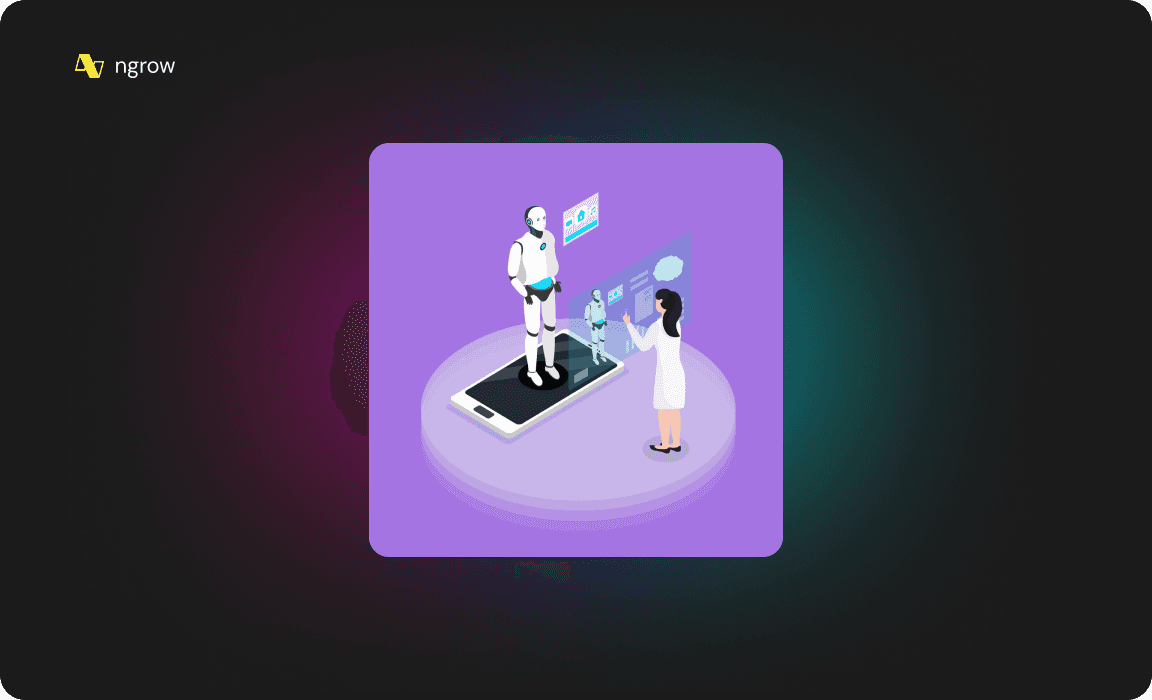3
min to read
May 27, 2024

Push notifications have become an essential tool for mobile app developers to engage with their users and keep them informed about new updates, offers, and other relevant information. The advent of AI has significantly improved the effectiveness of push notifications by enabling developers to tailor them to individual users' preferences and behaviors. In this article, we will explore the latest advancements in AI for push notifications and discuss how they can be applied to improve user engagement.
Personalization through AI-driven Push Notifications
One of the primary benefits of AI-driven push notifications is personalization. By analyzing user behavior, preferences, and demographics, AI algorithms can create targeted push notifications that resonate with individual users. This approach ensures that users receive relevant and timely information, increasing the likelihood of engagement and conversion.
For instance, a fashion e-commerce app can use AI to identify users who frequently purchase specific clothing items or brands. The app can then send targeted push notifications with personalized offers, new arrivals, or recommendations based on the user's preferences. This approach not only increases user engagement but also enhances the overall shopping experience.
Predictive Analytics for Push Notifications
Predictive analytics is another significant advancement in AI-driven push notifications. By analyzing user behavior and patterns, AI algorithms can predict when a user is likely to engage with a push notification. This enables developers to send push notifications at the most opportune moments, maximizing the chances of conversion.
For example, a travel app can use predictive analytics to identify users who are planning a trip. The app can then send targeted push notifications with relevant travel information, such as flight updates, hotel reservations, or local attractions. By sending these notifications at the right time, the app can increase user engagement and enhance the overall travel experience.
Contextual Push Notifications
Contextual push notifications are another innovative approach to AI-driven push notifications. By analyzing the user's context, such as their location, time of day, or device type, AI algorithms can send push notifications that are relevant to the user's current situation.
For instance, a fitness app can use contextual push notifications to remind users to exercise when they are near a gym or have a free slot in their schedule. This approach not only increases user engagement but also encourages healthy habits.
A/B Testing and Optimization
A/B testing and optimization are crucial components of AI-driven push notifications. By testing different push notification strategies, AI algorithms can identify the most effective approaches and optimize them for better results.
For example, a gaming app can use A/B testing to compare the effectiveness of different push notification messages, images, or timing. By analyzing the results, the app can optimize its push notification strategy to increase user engagement and conversion.
Integration with Other AI Technologies
AI-driven push notifications can also be integrated with other AI technologies to enhance their effectiveness. For instance, natural language processing (NLP) can be used to analyze user feedback and sentiment, enabling developers to create more effective push notifications.
Similarly, machine learning (ML) can be used to analyze user behavior and preferences, enabling developers to create targeted push notifications that are tailored to individual users.
Challenges and Limitations
While AI-driven push notifications offer numerous benefits, they also come with several challenges and limitations. One of the primary challenges is ensuring that AI algorithms are fair and unbiased, as they can perpetuate existing biases if not properly trained.
Another challenge is dealing with the increasing volume of data generated by AI-driven push notifications. Developers must ensure that they have the necessary infrastructure and resources to handle this data and make informed decisions.
Best Practices for AI-driven Push Notifications
To get the most out of AI-driven push notifications, developers should follow several best practices:
Understand Your Users: Develop a deep understanding of your users' preferences, behaviors, and demographics to create targeted push notifications.
Use A/B Testing: Use A/B testing to compare the effectiveness of different push notification strategies and optimize them for better results.
Integrate with Other AI Technologies: Integrate AI-driven push notifications with other AI technologies, such as NLP and ML, to enhance their effectiveness.
Ensure Fairness and Bias: Ensure that AI algorithms are fair and unbiased by properly training them on diverse data sets.
Monitor and Analyze Data: Monitor and analyze data generated by AI-driven push notifications to make informed decisions and optimize the strategy.
Conclusion
AI-driven push notifications have revolutionized the way mobile app developers engage with their users. By leveraging AI algorithms, developers can create targeted, personalized, and contextual push notifications that increase user engagement and conversion. To get the most out of AI-driven push notifications, developers should follow best practices, such as understanding their users, using A/B testing, and integrating with other AI technologies. By doing so, they can enhance the overall user experience and drive business success.



